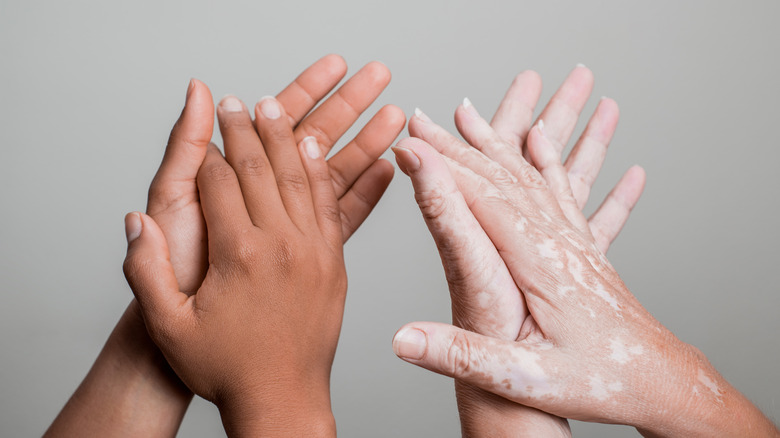How Rare Is Vitiligo?
From light to dark and all shades in between, our skin is usually the first thing that others notice. According to the Cleveland Clinic, our skin is our body's largest organ. It plays the role of protecting our body from foreign invaders like bacteria, it gives us the ability to feel, and it helps to regulate body temperature. With skin covering every inch of our bodies, skin conditions are not uncommon.
Skin color is a common attribute used to describe a person's appearance. The epidermis, the top layer of the skin, contains melanin which gives your skin its color. The amount of melanin you produce determines how light or dark your skin is. There are skin conditions that can affect your skin's ability to produce melanin. According to the American Academy of Dermatology, vitiligo is a condition that leads the skin to lose its natural color, creating light patches on the skin. How common is this condition?
One percent of the population has vitiligo
According to the American Osteopathic College of Dermatology (AOCD), the cause of vitiligo is unknown. However, it is believed that vitiligo is an autoimmune disorder in which the body destroys the melanocytes, the melanin-producing cells of the skin.
A review in the International Journal of Dermatology discusses how vitiligo is commonly associated with other diseases like thyroid disease, alopecia, lupus, rheumatoid arthritis, psoriasis, inflammatory bowel disease, and scleroderma.
Vitiligo can cause white patches in the eyes, inner ears, mucous membranes, hair, and any part of the skin, according to the AOCD. The white patches are often first noticed on the face, feet, or hands before the age of 20. Up to one percent of the population has vitiligo. Although vitiligo can affect anyone, it is most noticeable with people who have darker complexions. The AOCD notes that diagnosing vitiligo does not require any special testing.


